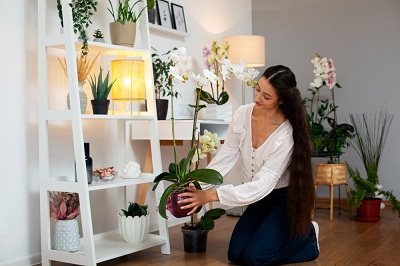Creating a beautiful home is an art that blends aesthetics, comfort, and functionality. With the right approach, anyone can transform their living space into a haven of style and relaxation. Whether you’re redecorating an existing home or starting from scratch, these essential decorating tips will guide you to achieving a stunning interior that reflects your personal taste.
1. Understanding Your Space: The First Step to Beautiful Decorating
Before diving into decorating, it’s crucial to understand the space you’re working with. Consider the layout, natural light, and the purpose of each room. This understanding will guide your choices in colors, furniture, and décor, ensuring that everything you add enhances the room’s function and aesthetics.
Assessing Room Functionality
Every room has a primary function, and this should dictate your design choices. A living room, for example, is a space for relaxation and socializing, so comfort should be a priority. On the other hand, a home office needs to be organized and free of distractions to boost productivity.
Maximizing Natural Light
Natural light is one of the most important elements in home decoration. It can make spaces feel larger and more inviting. Use light, airy curtains to let in as much light as possible, and consider the placement of mirrors to reflect light and create a sense of space.
2. Choosing the Right Color Palette
The colors you choose for your home set the tone for the entire space. A well-thought-out color palette can tie together all elements of your design, creating a cohesive and harmonious look.
Understanding Color Psychology
Colors have a profound impact on our mood and emotions. For instance, blues and greens are calming and perfect for bedrooms, while yellows and oranges are energizing and ideal for kitchens or home gyms. Neutral tones like grays, whites, and beiges are versatile and can be used as a backdrop for more vibrant accents.
Creating a Flow with Color
To create a sense of continuity throughout your home, choose a base color that can be used in every room, and then add complementary colors to each space. This approach ensures that each room is unique yet connected to the overall design theme.
3. Selecting Furniture That Fits Your Space and Style
Furniture is the backbone of any room’s design. It should be both functional and reflective of your personal style. The key is to select pieces that fit the scale of the room and serve the intended purpose.
Prioritizing Comfort and Functionality
In spaces like the living room or bedroom, comfort is paramount. Choose sofas and beds with quality cushions and fabrics. In more utilitarian spaces like the kitchen or home office, focus on pieces that enhance productivity, such as ergonomic chairs and ample storage solutions.
Blending Different Styles
Don’t be afraid to mix and match different furniture styles. A modern sofa can look stunning paired with a vintage coffee table. The key is to find a common thread—such as color or material—that ties the pieces together.
4. Incorporating Textures and Patterns
Textures and patterns add depth and interest to your home decor. They can make a space feel more inviting and lived-in, rather than sterile and impersonal.
Layering Textures
Layering different textures—like a plush rug, linen cushions, and a leather chair—adds richness to a room. This technique works especially well in neutral-colored rooms, where varying textures prevent the space from feeling flat.
Using Patterns Wisely
Patterns should complement the rest of the decor without overwhelming the space. If you’re using bold patterns on large pieces like a sofa, balance them with solid-colored accents. For smaller items like pillows or curtains, feel free to experiment with more vibrant designs.
5. Personalizing Your Space with Decor
Decorative elements are what make a house feel like a home. They reflect your personality and interests, and they can be easily swapped out to refresh the look of a room.
Displaying Art and Photos
Art and photos are a wonderful way to add a personal touch to your home. Choose pieces that resonate with you, whether they’re family photos, paintings, or sculptures. For a cohesive look, consider framing all your art in similar styles or colors.
Adding Greenery
Plants bring life into any room. They not only purify the air but also add a touch of nature to your decor. Choose plants that suit the lighting conditions of each room, and vary the sizes and types for visual interest.
6. Lighting: The Finishing Touch
Lighting can completely transform the ambiance of a room. It’s important to have a mix of lighting sources to create a well-lit, welcoming space.
Layering Light Sources
A well-lit room typically includes three types of lighting: ambient, task, and accent. Ambient lighting, such as overhead fixtures, provides general illumination. Task lighting, like table lamps or under-cabinet lights, focuses on areas where specific activities take place. Accent lighting, such as wall sconces or track lighting, highlights artwork or architectural features.
Choosing the Right Bulbs
The type of bulb you choose can affect the mood of a room. Warm white bulbs create a cozy, inviting atmosphere, while cool white bulbs are ideal for workspaces or modern designs.
7. The Power of Accessories
Accessories are the finishing touches that bring a room together. They should complement your overall design without cluttering the space.
Using Decorative Pillows and Throws
Pillows and throws are an easy way to update your decor. Choose patterns and textures that enhance your existing color palette and add an element of comfort to your seating areas.
Arranging Decorative Objects
When arranging decorative objects, use the rule of three—group items in odd numbers for a more natural look. Vary the heights and textures of the objects to create visual interest.
8. Staying Organized for a Clutter-Free Home
A beautiful home is not only about what you add but also about what you remove. Decluttering is essential to maintaining a clean and attractive space.
Implementing Smart Storage Solutions
Use storage solutions that blend with your decor, such as decorative baskets, shelving units, and multi-functional furniture. This not only helps keep your space tidy but also adds to the overall aesthetic.
Regular Maintenance
Keep your home looking its best by regularly tidying up and addressing any clutter before it becomes overwhelming. A clean, organized home is a beautiful home.
By following these tips, you can create a home that is not only beautiful but also functional and reflective of your personal style. Remember, decorating is an ongoing process—don’t be afraid to experiment and update your space as your tastes evolve.
Conclusion
Creating a beautiful home is about more than just aesthetics—it’s about crafting a space that reflects your personality, meets your needs, and feels inviting. By understanding your space, choosing the right colors and furniture, layering textures, and adding personal touches, you can transform any room into a stylish and functional haven. Don’t forget the importance of lighting and staying organized to maintain a clutter-free environment. Decorating is a journey, not a destination, so enjoy the process of making your home uniquely yours.




